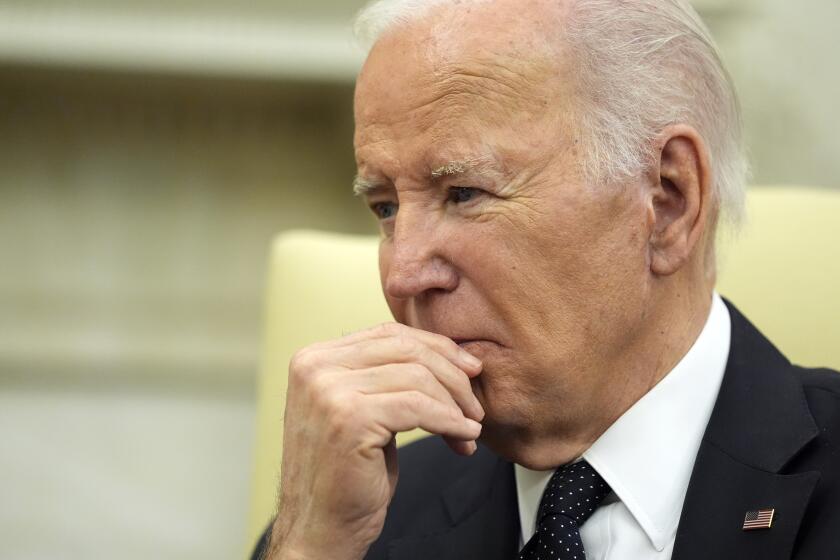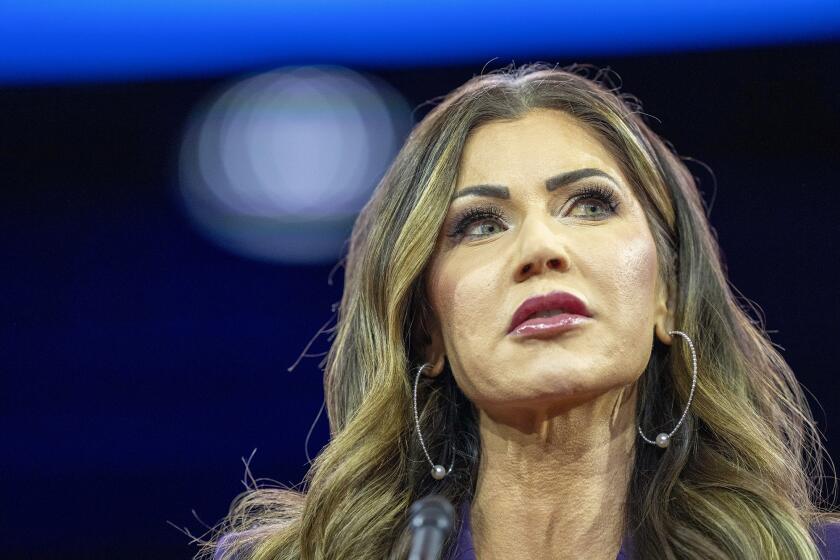Meese Stresses Bolivian Role in Drug War
Atty. Gen. Edwin Meese III said Wednesday that Bolivia, South America’s second-largest source of cocaine, is entering a critical phase in its drive to drastically reduce its coca crop, an effort that officials hope will cut the world’s cocaine supply significantly.
The outcome of the anti-cocaine efforts by the continent’s poorest nation could bring pressure on other major coca-producing nations, including Peru and Colombia, to expedite their own programs to combat the drug.
Meese gave his report on Bolivia’s crucial anti-drug drive, expected to last for several months, to reporters during a flight back to the United States from a weeklong, five-country mission on the Latin cocaine crisis.
The attorney general said the trip was extremely helpful but made clear that he expects no short-term solutions to the cocaine problem. Although Meese said the personal review of the efforts in each of the countries provided “a more vivid picture” of the problem, he added: “The extent of the challenge is major. We don’t see any quick solutions or lucky breaks.”
As part of its efforts to stem cocaine output, Bolivia has been paying farmers up to $2,000 to stop growing coca plants, but the program has been hampered by the country’s dwindling finances. Bolivia recently has lagged behind in its payments for the voluntary coca reduction, and the government fears that farmers may not cooperate if the situation worsens.
In a meeting with Bolivian President Victor Paz Estenssoro on Wednesday, Meese said that the two men explored steps that the South American nation could take to pressure neighboring countries to pay large sums owed Bolivia so it can continue the farm payments. He said they also discussed the possible use of U.S. economic security funds to provide Bolivia with more money.
The attorney general said that the coming months will be a key period in the Bolivian cocaine battle because police forces have been successful in recent efforts against processors of coca paste, the first step in the production of cocaine. The result has been a drop in coca leaf prices, a development that has made the voluntary reduction program appealing to farmers.
Meese said that it “appears highly probable” that Bolivia will act this summer to outlaw coca growing, except in limited cases, a prohibition that could greatly strengthen the country’s drive against cocaine. Coca consumption has not been a major problem for Bolivians themselves, who use it mainly for tea and chewing, which does not have the narcotic effect of cocaine.
Coca is a major factor in the battered economy of Bolivia, the continent’s second-largest producer of coca after Peru. More than 80% of Bolivian coca is destined for illicit production, officials estimate.
4,000-Acre Eradication
Last year, the United States and Bolivia entered into an agreement under which Bolivia agreed to carry out an effective interdiction program and to eradicate more than 4,000 acres of coca cultivation by this coming Aug. 13--a goal that seems well within the country’s reach.
As further evidence of Bolivia’s increased commitment to fight the cocaine problem, Paz told Meese that the country is planning to establish a new ministry of narcotics control.
In assessing the overall Latin America trip--which included visits to the Dominican Republic, Colombia, Ecuador and Peru--Meese and other officials said it has been extremely helpful to observe firsthand what steps are being taken by the cocaine-source countries to counter the crisis.
Drug Enforcement Administration chief John C. Lawn noted that Meese had received personal commitments from the presidents of Colombia, Peru and Bolivia that their anti-cocaine efforts “will not waver.”
More to Read
Start your day right
Sign up for Essential California for news, features and recommendations from the L.A. Times and beyond in your inbox six days a week.
You may occasionally receive promotional content from the Los Angeles Times.






